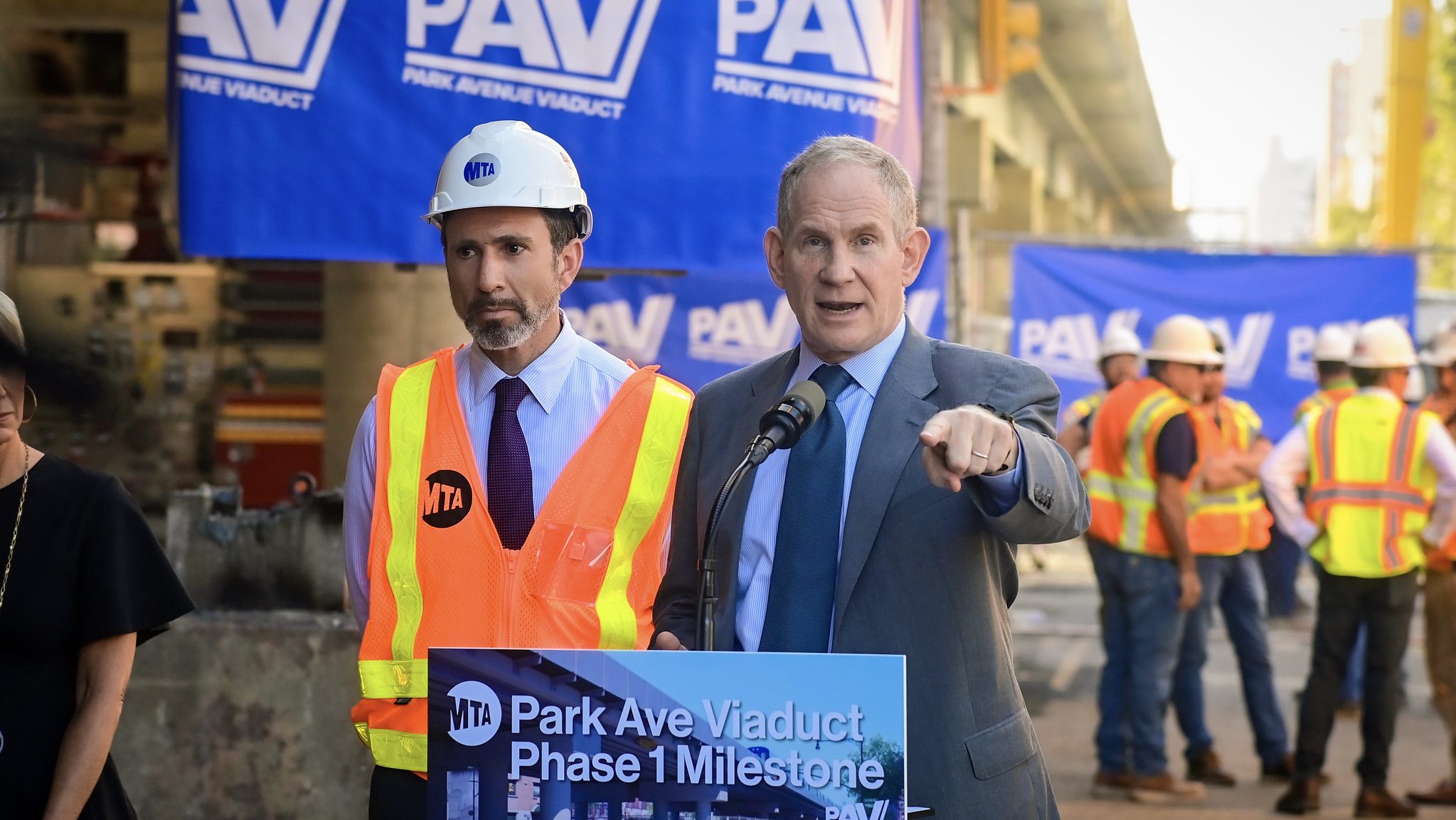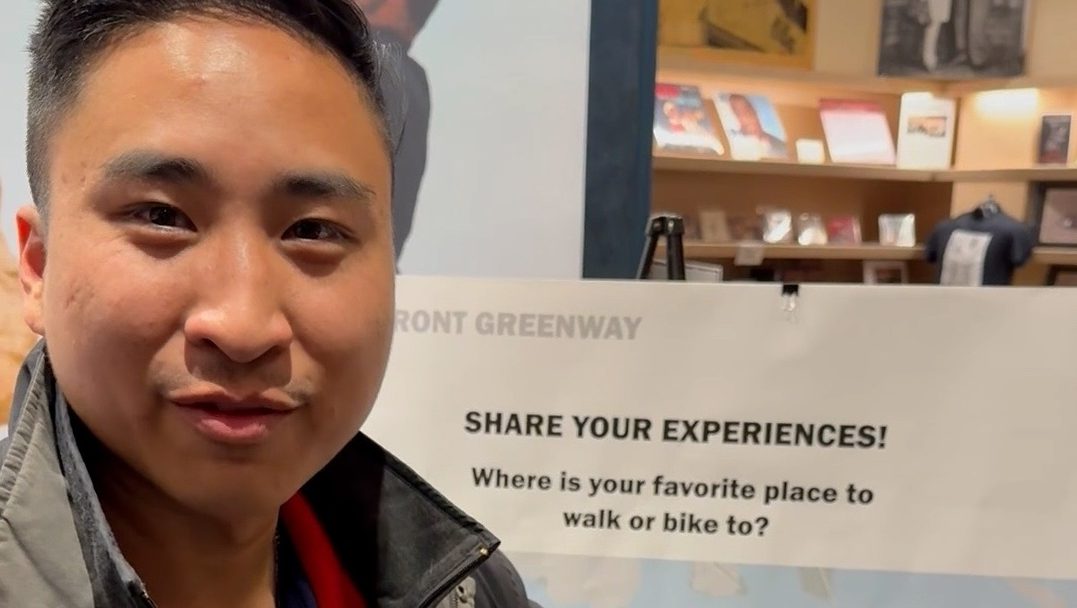Welcome to the first installment of the 2015 NYC Streetsies. The votes are in, and today we're looking back at how streets changed for walking, biking, and transit this year. Tomorrow will be all about the people who left a mark on the city's streets.
The Best Thing That Happened This Year

Bike-share debuted two years ago and put a charge into New York City cycling. Bicycling in the center of the city surged overnight. New protected bike lane segments on Midtown avenues accompanied the debut of the service. But despite the high demand, the future of Citi Bike was cloudy. With its bike supplier going bankrupt, would Citi Bike ever expand and reach more neighborhoods? With customers getting fed up with unpredictable service, could it even stay in business?
New ownership came on in 2014 promising to fix a broken system, and in 2015 they implemented a top-to-bottom bike-share overhaul. New software, new hardware, new bikes (designed by Ben Serotta!). It worked. You can trust the app. You barely have to worry about dead docks. Your bike is almost certainly not going to slip unpredictably into a lower gear.
Improved reliability was a prerequisite for expanding bike-share, and this summer the service area grew for the first time since launch. DOT and Motivate added more than a hundred stations in western Queens, northern Brooklyn, and Manhattan -- with more coming in 2016 and 2017. Ridership is rising again.
The bike-share rebound story isn't all rosy. DOT and Motivate spread the stations thinner in the expansion zones than in the original service area, which could degrade the quality of the service and put a damper on ridership growth. Hopefully any troubles that arise get addressed sooner rather than later. This was, after all, the year when the people in charge of New York City bike-share proved they can change course and fix mistakes.
Those maps showing bike-share coverage in the Bronx, Staten Island, central Queens, and deeper into Brooklyn? They don't look so far-fetched anymore.
Best Walking Project
Video of opening day on the High Bridge: Clarence Eckerson
New York is a city where most people don't own cars and nearly everyone has to cross a river, estuary, canal, or inlet on a regular basis. But until this year, there was no car-free bridge connecting different boroughs. The reopening of the High Bridge changed that, creating a quiet, stress-free walking and biking path linking Upper Manhattan and the Bronx.
The High Bridge restoration, initiated by the Bloomberg administration as part of PlaNYC, has opened up gorgeous views of the city and the Harlem River. Walking between Washington Heights and Highbridge, the neighborhood, will make you wonder how New York ever let this 19th century viaduct slip into a 40-year period of unusable decrepitude. For people living or working nearby, it's practical as well as sublime -- a new option to get to work, the highlight of the walk to school, the best way to go over and see family and friends on the other side of the river.
Now, if only it were open 24 hours a day.
Best Bicycling Project
For a long time, Queens Boulevard has been synonymous with dangerous traffic -- a street where people bike or walk only because they have to. It's the most motor-fied surface street in New York, the site of too much loss of life, the "Boulevard of Death," a constant threat that people can't avoid.
DOT's redesign of 1.3 miles of Queens Boulevard this summer showed that the nature of the street can change. By eliminating or squaring off slip lanes and adding a bike lane separated from motor vehicle traffic by flexible posts, the city has started to make parts of Queens Boulevard functional for people on bikes. The implementation schedule was impressive: It took less than seven months for DOT to progress from the first public workshop to the beginning of construction.
Those 1.3 miles are already useful for east-west bicycling trips in Queens, but much more will need to be done in future redesign phases to create a continuous bikeway linking eastern Queens to the Queensboro Bridge. The value of the 2015 project derives, in large part, from the example it set. If DOT can turn Queens Boulevard into a bikeable street, any street in the city can be transformed.
Best Bus Project
DOT and the MTA launched two Select Bus Service routes this year -- the M86 and the Q44 -- but Streetsie voters anointed the 125th Street bus lanes the best bus project of 2015. Maybe it was the satisfying sense of closure that set it apart.
Select Bus Service debuted on 125th Street in 2014 after a drawn-out political fight, but without bus lanes west of Lenox Avenue. Much of the old-guard Harlem political class didn't want to cede street space to transit. The lack of dedicated lanes showed: While travel times on the M60 improved more than 30 percent between Lenox and Second Avenue, according to DOT and the MTA, riders had to endure the same old sluggish transit on the sections without bus lanes.
With political support from City Council members Mark Levine and Ydanis Rodriguez, as well as State Senator Adriano Espaillat, DOT finished the job this year.
Best Public Space Project
Generally speaking, the streets around Penn Station are not befitting one of the world's great pedestrian hubs. The sidewalks are cramped, there's nowhere to take a load off, and when rush hour hits, people walk in the traffic lanes.
For a few glorious weeks this summer and fall, the temporary Plaza 33 turned the eastern half of 33rd Street between Seventh Avenue and Eighth Avenue into a place where people actually wanted to sit and linger. It better come back next year.
DOT's Biggest Missed Opportunity to Add Good Bike Infrastructure
There's a mismatch between the ambitious safety goals of Vision Zero and the lack of boldness in the street designs coming out of DOT's shop. Nowhere is this more apparent than the department's hesitance to include good bikeways by default in its safety projects.
A "Great Streets" redesign of Atlantic Avenue in eastern Brooklyn, for instance, includes no bike infrastructure and barely modifies the underlying geometry of a dangerous high-speed street. DOT's road diet plan for the Riverside Drive viaduct calls for extra-wide parking lanes and no bike lanes, even though it's a heavily biked stretch with room to spare. The top vote-getter in this category, eking out a "win" over Riverside, is a perfect candidate for protected lanes that DOT failed to act on this year -- Chrystie Street.
Four things make the missed opportunity on Chrystie especially galling: across-the-board political support for a protected lane from the local community board and elected officials at the city, state, and federal levels; the street's importance as a key connection to the Manhattan Bridge; the obvious failure of the current bike lane design to keep cars, trucks, and buses out of the path of cyclists; and the seemingly ideal conditions for a protected lane.
DOT said in February that an upcoming repaving could lead to changes, but since then the old design has been restriped with a fresh coat of thermoplast.
Best Department of Transformation Intervention
Before & After: 1st Ave & 59th #DemandMore #bikeNYC pic.twitter.com/7yEfhPkMeI
— Transformation Dept. (@NYC_DOTr) December 18, 2015
In the tradition of NYC's guerrilla street designers, LA's Department of DIY, and unsanctioned tactical urbanists across the land, the Department of Transformation deftly deployed a few low-cost tools -- cones, mostly -- to show how simple it can be to dramatically improve the experience of biking on NYC streets.
Their first mark was, fittingly, Chrystie Street. Taking the top spot in the voting, though, was this month's stroke of genius to keep people from parking in the bike lane on First Avenue by 59th Street. The official-looking signage is a brilliant new touch.
Best Sign That NYC Keeps Moving in the Right Direction
From 2000 to 2013, the share of NYC commuters who take transit to work rose 6.5 percentage points, from 52.6 percent to 59.1 percent, while the share who drive to work dropped from 33.9 percent to 27.4 percent, according to NYU's Furman Center.






